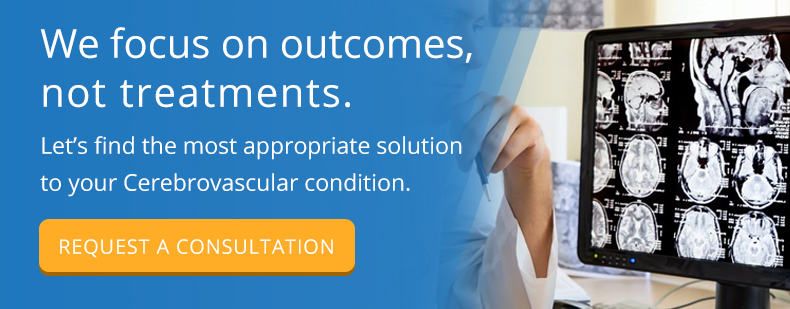If your physician has diagnosed you with a blockage of your carotid artery, he or she may have recommended that you undergo a procedure called carotid angioplasty and stenting. By taking a little extra time to understand what to expect before, during and after your procedure, you can be better prepared and rest a little easier as your surgery date approaches.
Overview of Carotid Angioplasty and Stenting
The carotid artery travels along either side of the neck and provides oxygen-rich blood to the face and head, including the brain. A blockage reduces blood flow, putting you at an increased risk for cerebrovascular events such as a stroke.
The goal of carotid angioplasty and stenting is to open the blood vessel wider to allow blood to flow through freely and to keep it open. This is done with a small mesh device called a stent. This helps restore blood supply to the brain, thereby reducing the risk of adverse health effects.
Steps to Take Before the Procedure
While your healthcare team will work together with you to outline a specific pre-surgery plan, you can generally expect to undergo a physical exam and perhaps some diagnostic tests to ensure you are in good condition for your procedure.
Discuss Medications
If you take medications, your dosages may be modified prior to surgery, especially if they affect blood clotting. Do not alter any dosages on your own. Instead, be sure to discuss your medications with your physician, preferably at least two weeks before your surgery date.
Quit Smoking
If you are a smoker, your doctor will probably recommend quitting. Smoking affects the body’s ability to heal and recover. By quitting prior to your procedure, you could improve your outcome and results. Your physician can offer you advice and support regarding smoking cessation techniques and aids.
Refrain From Eating and Drinking
As your surgery approaches, you may be asked to refrain from eating or drinking a certain number of hours before your procedure. These guidelines are for your comfort and safety, so be sure to adhere to your doctor’s directions. If you are asked to restrict liquids but need to drink to take medication, limit it to a small sip of water. Chewing gum or having a sip of coffee is not allowed.
What Occurs on the Day of the Procedure
Carotid angioplasty and stenting is a minimally invasive procedure, typically requiring only a small incision near your groin. On the day of the procedure, your neurosurgeon may do imaging to visualize your carotid artery, or that may have been done at a previous visit.
You will receive medication to ease any discomfort, and the incision site will be cleaned and shaved. Whether you receive general anesthesia or remain awake but numbed will be determined between you and your healthcare team, but your neurosurgeon will make sure you are comfortable during the procedure.
During the procedure itself, your neurosurgeon will insert a catheter through a small incision and guide it through your blood vessels to reach the blockage within the carotid artery. Within the catheter is a small device containing a balloon, which the neurosurgeon can inflate to expand the walls of the blood vessel.
Once the carotid artery is opened, the neurosurgeon will place a stent, a mesh device that will keep the blood vessel open and allow the blood to continue to flow through. Then the neurosurgeon will remove the balloon and catheter, and the incision site is closed. The stent remains, keeping the carotid artery open.
What Occurs After the Procedure
Immediately after the procedure, you will need to remain lying down for a period of time, as determined by your neurosurgeon. However, because carotid angioplasty and stenting is minimally invasive, many patients are able to walk around within a few hours of surgery, though this depends on your specific condition. You can expect to remain in the hospital at least overnight so your healthcare team can monitor your recovery.
What Occurs When You Go Home
Following your discharge from the hospital, your surgeon or physician may prescribe pain medication. Though the incision site is small, some bruising and tenderness is normal and can be expected. If you notice any excessive redness or tenderness, weeping or fever, contact your doctor.
Your physician will also give you guidelines regarding any prescription or over-the-counter medications you may have been taking prior to surgery. Do not modify or reduce any dosages yourself. Instead, consult your prescribing physician for guidance.
Though your healthcare team will outline specifics of your recovery plan with you, most people are asked to limit strenuous activity for a time. For many patients, this period includes 24 to 48 hours of no heavy lifting, then about a week of modifications. However, every patient’s recovery is different, and your team will develop a plan tailored to your needs.
Your physician may work with you on lifestyle changes to reduce your risk for future cerebrovascular events. This could include smoking cessation, dietary counseling or developing an exercise plan. The particulars underlying your need for carotid angioplasty and stenting are very personal and specific to your health condition; your doctor can help you develop a plan to avoid having to have further surgery.


